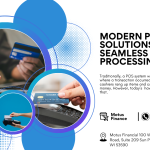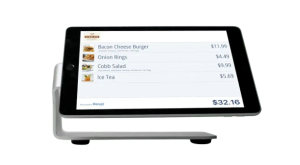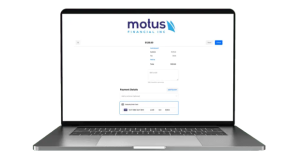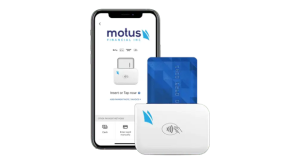Pros and Cons of Offering Free WIFI in Restaurants
Should Restaurants Offer Free Wi-Fi?
The Internet is omnipresent in daily life, and dining out is no exception. 10+ years into to social media and we are still obsessed with posting food photos on Instagram and modern diners continue to post reviews on Yelp. It’s common to see diners pause their conversation when the server arrives with their plates, snap photos as the food cools down, and then spend a few minutes engaging online followers and friends with pictures of their meals.
Equally present in today’s dining scene are customers with laptops. Students, self-employed freelancers, and casual Web surfers tend to seek out locales offering free Wi-Fi, to take a break from their homes or school libraries. Considering how popular it is for freelancers and students to work outside of offices or homes, it’s safe to say that the presence of customers typing away is not going away anytime soon.
In the present technological climate, customers expect free Internet access from restaurants. And for many years, dining establishments have obliged. The soaring popularity of the gig economy— largely demanding free Wi-Fi — has served as a lesson for cafés and day-time dining spots: If you offer free Wi-Fi, they will come.
At what point should restaurants and cafés not be held responsible for their diners’ surfing capabilities? Offering free Wi-Fi used to be a novelty; now it’s a customer expectation. If you don’t offer free Internet, then diners might go elsewhere. Below we offer suggestions for managing your diners’ expectations without hurting your business.
Offering free Wi-Fi used to be a novelty; now it’s a customer expectation. If you don’t offer free Internet, then diners might go elsewhere. Below we offer suggestions for managing your diners’ expectations without hurting your business.
When Customers Spend Too Much Time Sitting and Too Little Money
Turnover rates can make or break a restaurant. One restaurant found that over a 10-year period, their turnover rate had increased by 54 minutes. By studying their video cameras, they saw that customers were engaging in specific behaviors that led to them leaving at a much slower pace. You might have already guessed what those behaviors were: taking pictures of food or pausing to check their phones.
Worse yet, the restaurant realized that some of the customer complaints about the food—like that it was too cold—were a result of the customers’ own Web behavior. So food that was sent back to the kitchen and remade could have been perfectly satisfying had it been eaten immediately and without interruption.
What this restaurant discovered is what many others are also learning: Valuable seating space is taken up by customers who use the Internet for long periods of time—and it’s not covering the bills.
Our Recommendations
If you find that your turnover rate has slowed or that sales have plateaued (or lowered) because of long-seated Web surfers, try out these two options to increase your restaurant or café’s output:
1. Specialized seating space for laptop users. The slowest diners to leave your establishment are probably the ones working away on their laptops. You might even know some of them by name! If you want to continue offering free Wi-Fi but don’t want diners hogging valuable real estate, we suggest creating a designated seating space for laptop users. Set up a long bar along the walls so that floor space can be reserved for regular diners, or select two or three “sharing” tables, where customers using laptops can work together.
2. Use a Web connection that limits free surfing time to 30 minutes. Reserve your Internet for your own business needs and employees, and then sign up with a connection that manages surfing times. By giving customers 30 minutes to one hour of free surfing time, you won’t anger customers who want Wi-Fi. But by forcing them to then pay for Internet access after that allotment of free time, you can reduce the number of customers who are only coming to surf, instead of eating at your place.
Security Risks of Offering Free Wi-Fi
If you listened to news recently, you probably heard the story of the WPA2 vulnerability last fall. Basically Wi-Fi devices lacking upgraded firmware could allow a hacker to impersonate the user on that network. The vulnerability was quickly exposed and all Wi-Fi owners were encouraged to reset their devices to install the latest software.
This exposes a real threat to anyone on public network. Concerns have been raised about using autocomplete for banking information, passwords, and internet logins on public networks.
In Seattle, one ambitious gang of hackers caused over $3 million in damages by stealing data from at least 53 local businesses. You don’t want to be a victim of Internet crime because your restaurant offers free Wi-Fi.
A Working Solution for Small Businesses
Set up a formal cyber security plan. The majority of small businesses and restaurants do not have a formal cybersecurity plan in place to deter hackers. If you barely have as much as a password, then look into these three steps.
1. Encrypt your data with a software program. Encryption tends to work only when a user is logged into a computer. It’s recommended that you set up your computer to automatically log out after 15 minutes of inactivity.
2. Lock your network. The best defense against hacking is to have no public wireless Internet at all, but the second-best option is to cloak your wireless network. It can be as simple as present customers who request your Wi-Fi with the exact name of the network and given the password.
3. Install anti-malware and anti-virus protections.
Internet Users Disrupt the Ambiance of Your Restaurant
The rising trend of slow-cooked food and locally sourced meals is ushering in a dining period that rejects modern, technologically influenced behaviors. If getting diners together over intimate meals is your intention, then you might find phone-checking customers to be a distraction to those around them.
Unplug Your Restaurant
One option is to not offer public wireless Internet at all. In this case, you have the luxury of keeping your wireless networks private without the fear of cyber attacks or poor customer turnover. We recommend informing diners of your decision in the most charming way possible. Describe your desire for an intimate customer experience that conflicts with looking at screens, either in your menu or with a sign on the wall. By telling customers that you want your restaurant to be a place for connecting face to face, you are letting them know to adjust their mindsets and get into the spirit of things. Also, train your staff to handle requests and frustrations in a manner that will make customers want to come back and enjoy your restaurant for its uniquely warm ambiance.
ABOUT MOTUS FINANCIAL
Our motto is “Moving Forward” and it is our desire to help your business positively grow in many ways. Get started today by calling us at 608-819-8666 or visit us online anytime at www.MotusCC.com. Motus Financial has teamed up with Lavu to offer strategic Point of Sale Solutions to retail and restaurants across our service area.




 Our POS systems are designed to streamline in-store transactions. With features like inventory management, sales reporting, and customer tracking, our POS solutions help you run your business more efficiently. Our terminals are compatible with various payment methods, including chip cards, contactless payments, and mobile wallets.
Our POS systems are designed to streamline in-store transactions. With features like inventory management, sales reporting, and customer tracking, our POS solutions help you run your business more efficiently. Our terminals are compatible with various payment methods, including chip cards, contactless payments, and mobile wallets.




